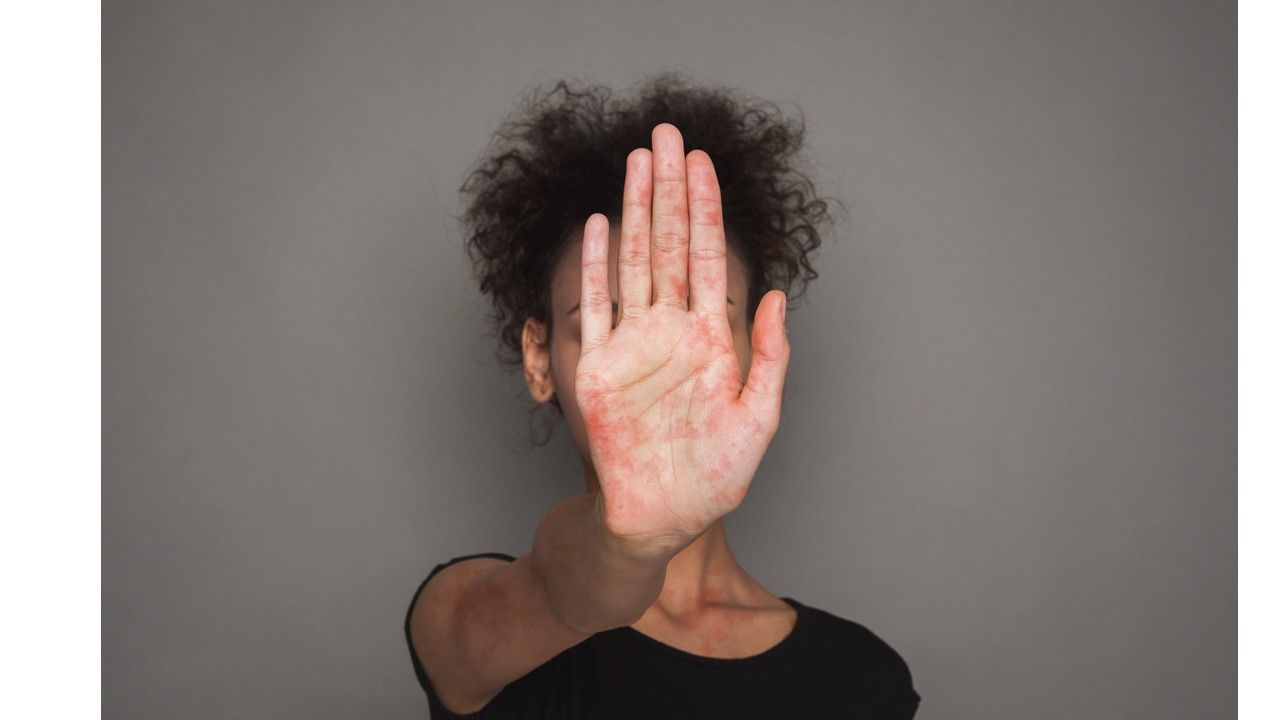Article
Anifrolumab Shows Efficiency in Systemic Lupus
Author(s):
ACR Annual Meeting: In patients with moderate to severe systemic lupus erythematosus, anifrolumab (AstraZeneca) was superior to placebo for overall disease activity, skin disease and oral corticosteroid tapering, among other efficacy endpoints, according to a study presented at the annual meeting of the American College of Rheumatology in Atlanta on November 12.
(©ProstockStudio,AdobeStock)

In patients with moderate to severe systemic lupus erythematosus, anifrolumab (AstraZeneca) was superior to placebo for overall disease activity, skin disease and oral corticosteroid tapering, among other efficacy endpoints, according to a study presented at the annual meeting of the American College of Rheumatology in Atlanta on November 12.
In an interview with Rheumatology Network, Professor Eric Morand, head of the School of Clinical Sciences at Monash Health, Monash University, Australia, said, “here we have improved disease activity and lower steroid use - a clinical outcome everyone wants.”
Anifrolumab, a human monoclonal antibody to the type I interferon receptor subunit 1, showed efficacy in a phase 2 study of patients with active SLE. While the first phase 3 trial, TULIP-1, did not meet its primary endpoint, multiple other endpoints suggested clinical benefit.
This second phase 3 trial, TULIP-2, which included 362 patients with moderate to severe SLE despite standard-of-care treatment, evaluated efficacy and safety of intravenous anifrolumab 300 mg versus placebo every four weeks for 48 weeks. The primary endpoint was BILAG–based Composite Lupus Assessment (BICLA) response at week 52. Standard-of-care treatment was stable except for mandatory attempts at oral corticosteroid tapering to prednisone equivalent ≤7.5 mg/day for patients receiving ≥10 mg/day at baseline. Participants were randomized to receive anifrolumab (n=180, mean age 43.1 years, 93.3 percent female) or placebo (n=182, mean age 41.1 years, 93.4 percent female). Treatment completion was 85 percent for anifrolumab and 71.4 percent for placebo.
Anifrolumab was superior to placebo for BICLA response (47.8 percent vs 31.5 percent, respectively, P=0.001) and key secondary endpoints: oral corticosteroid reduction (51.5 percent vs 30.2 percent; P=0.014) and Cutaneous Lupus Erythematosus Disease Area and Severity Index response (49 percent vs 25 percent; P=0.039); annualized flare rate was numerically lower in the anifrolumab group (0.43 vs 0.64; rate ratio 0.67 [95% CI: 0.48, 0.94]; P=0.081).
Meanwhile, numeric differences favored anifrolumab in several other secondary endpoints, including Systemic Lupus Erythematosus Responder Index-4 (SRI4) response (55.5 percent vs 37.3 percent; nominal P< 0.001) and higher thresholds of SRI(5–8), time to onset of BICLA response sustained to week 52 (hazard ratio [HR], 1.55; 95% CI: 1.11, 2.18; nominal P=0.011), and time to first flare (HR, 0.65; 95% CI: 0.46, 0.91; nominal P=0.013). In patients with high baseline interferon gene signature, anifrolumab induced neutralization of interferon gene signatures by week 12 (median suppression 88 percent) that was maintained through week 52. Serum anti-double stranded DNA trended toward normalization with anifrolumab.
The safety profile of anifrolumab was similar to that of previous trials. Herpes zoster occurred in 7.2 percent of the anifrolumab group and in 1.1 percent of the placebo group. The serious adverse event rates were 8.3 percent and 17 percent, respectively, and the rate of adverse events leading to treatment discontinuation was 2.8 percent and 7.1 percent, respectively. One death occurred in the anifrolumab group due to pneumonia and 0.6 percent of patients taking the drug developed antidrug antibodies.
“There are three major takeaways from these data. Firstly, the interferon hypothesis for lupus pathogenesis is proven definitively by these human data. Secondly, understanding of how to measure treatment response in lupus trials, which has been a huge issue, is helped by these positive results, Professor Morand said. “Thirdly, pending regulatory approval, we could have a long awaited new and powerful treatment for lupus - the steroid sparing effects are compelling.”
REFERENCE
“L17 - Efficacy and Safety of Anifrolumab in Patients with Moderate to Severe Systemic Lupus Erythematosus: Results of the Second Phase 3 Randomized Controlled Trial.” Eric Morand, M.B.B.S., F.R.A.C.P., Ph.D., 4 p.m., Tuesday, Nov. 12. 2019 ACR/ARP Annual Meeting, Atlanta
DISCLOSURES
The authors disclosed several pharmaceutical industry associations.




